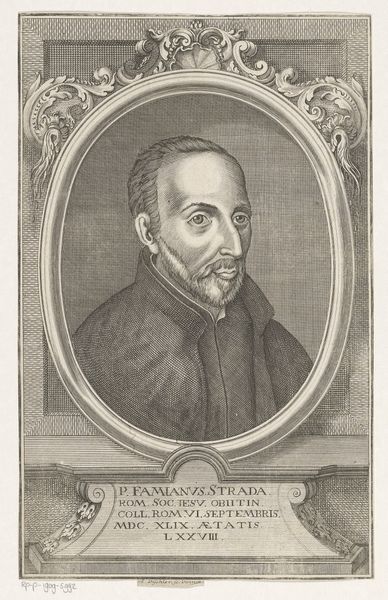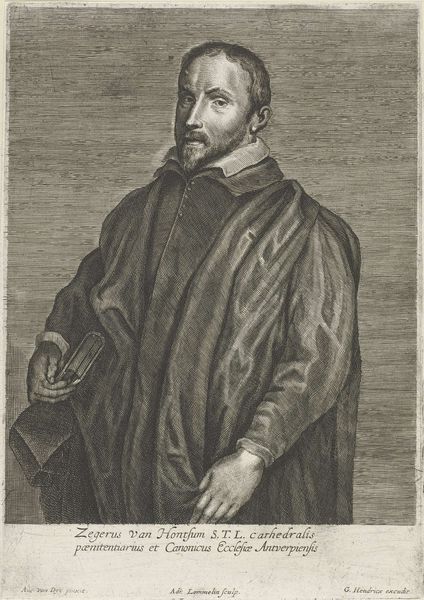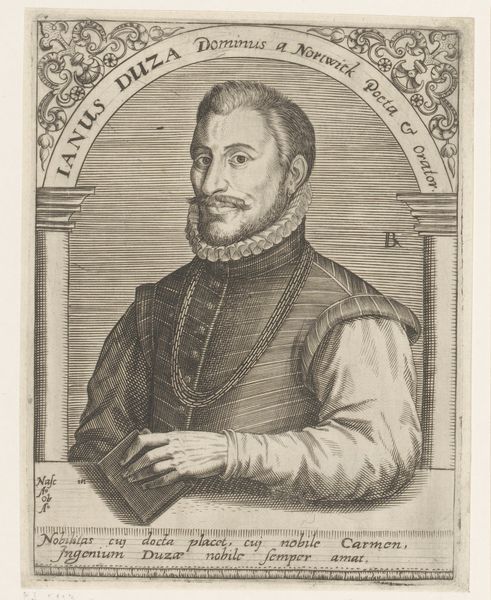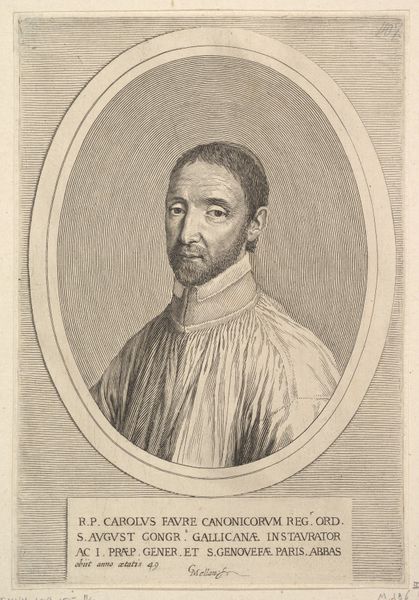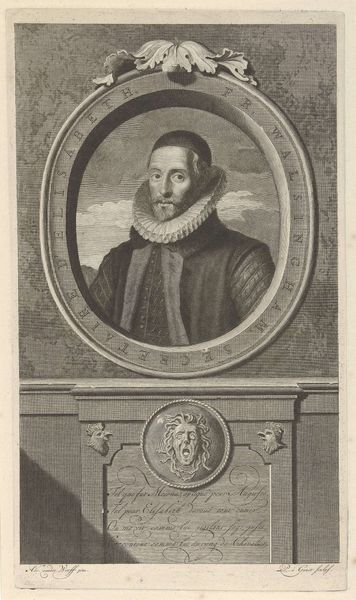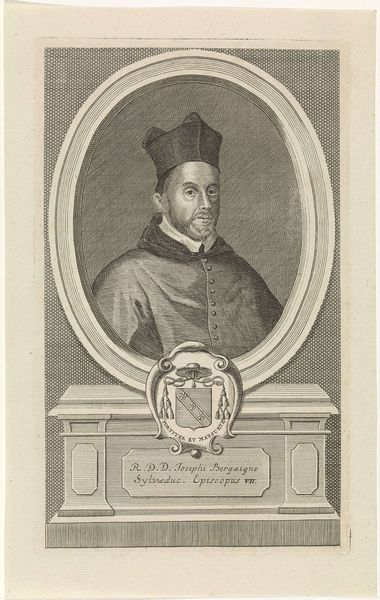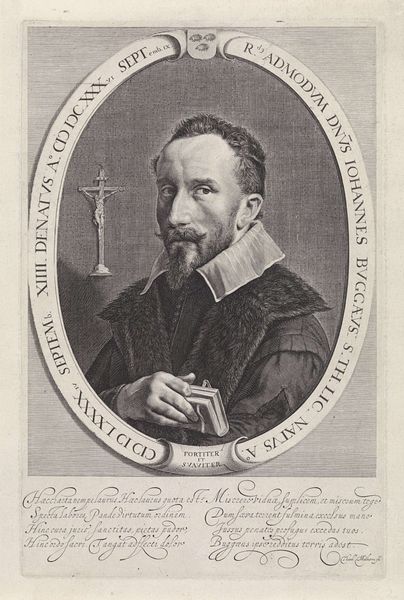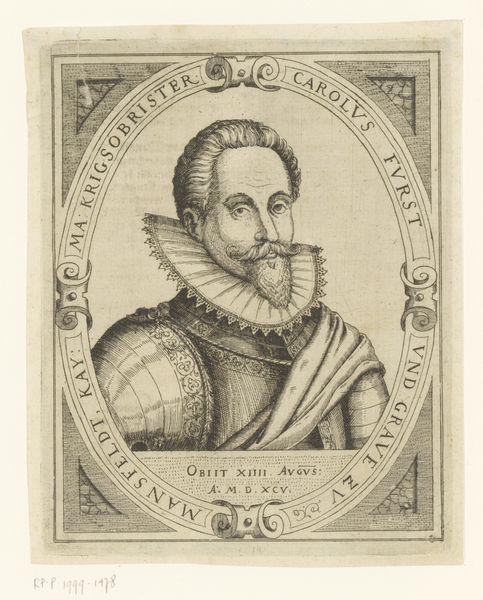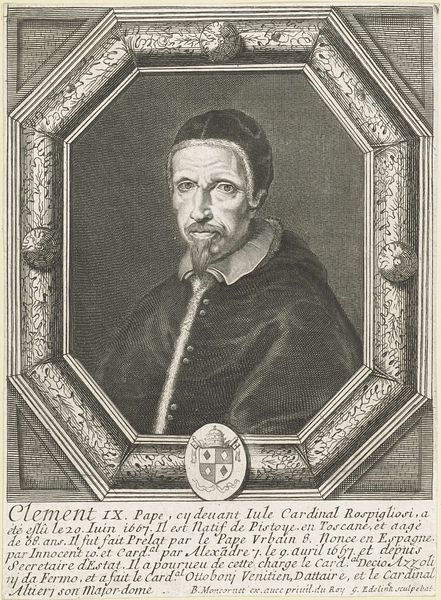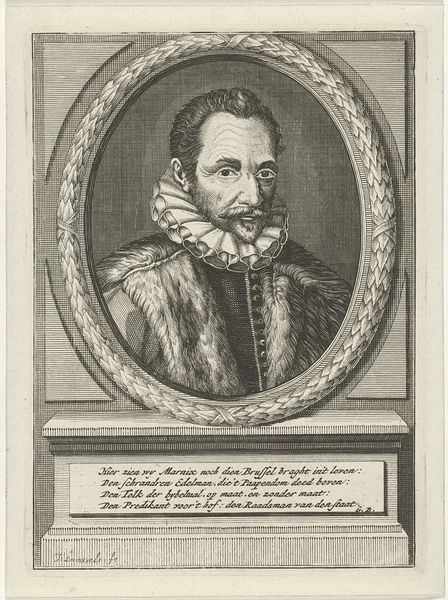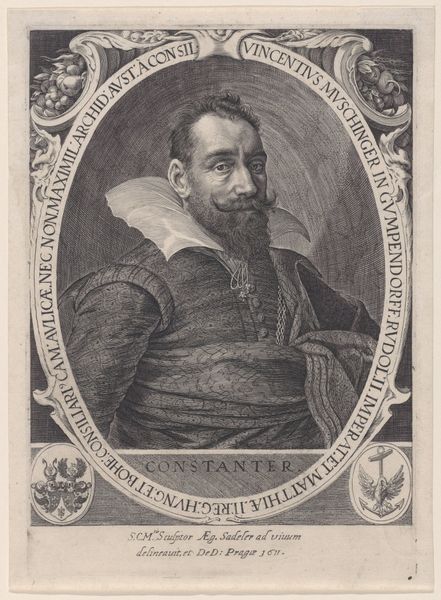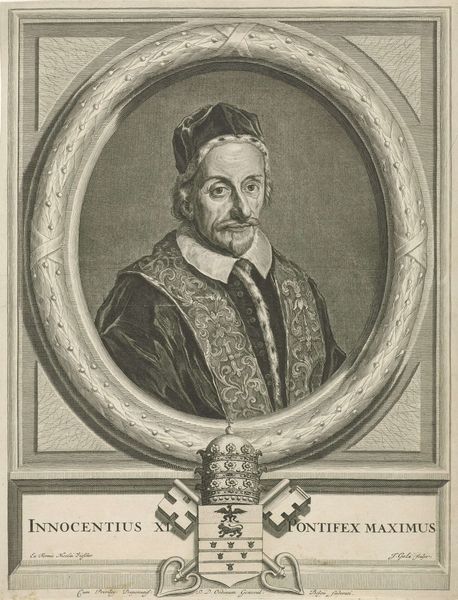
engraving
#
portrait
#
baroque
#
caricature
#
portrait reference
#
history-painting
#
engraving
Dimensions: height 367 mm, width 248 mm
Copyright: Rijks Museum: Open Domain
Curator: Look at the delicate line work! This is an engraving from 1681, "Portret van de Ambrosius Ignatius Spinola y Guzmán" by Richard Collin, currently held in the Rijksmuseum collection. It depicts a somber clergyman. Editor: There's such an air of melancholy about him, almost severe. The oval frame seems to amplify that contained feeling. I wonder what sociopolitical realities framed this portrait. Curator: Considering it's an engraving, the process of its creation is significant. Collin likely employed burins and other specialized tools to carve the image into a metal plate, demonstrating exceptional skill in manipulating these instruments. And the printing press of course. Editor: Absolutely, and we can situate it in the religious landscape of the late 17th century. Spain was grappling with internal conflicts while wielding immense global influence, using figures like Ambrosius Spinola to reinforce religious power. It speaks to themes of institutional authority, the image literally crowning the man as archbishop. Curator: The materials matter. Copper plates allowed for reproduction; this wasn't a unique art object like an oil painting. That very fact expands art to more than a canvas. The lines create the man, the tools define art. Editor: And who has access to it? This likely had a specific intended audience, potentially a way to solidify support or reinforce existing structures within the Spanish elite during a period of both internal decay and external colonial domination. Curator: This highlights how social positioning directly determined the methods and meaning embedded in art. The physical work of carving, distributing. Was this created for wealth, for social status, or simply for the art of creating the work. Editor: And to reiterate, that is precisely how art creates and reinforces social hierarchy. It’s more than just skillful carving; it's about who commissioned it, why, and how that affects perceptions of power. A lasting symbol for us to reflect on. Curator: So true; thank you, let’s continue. Editor: Agreed; on we go.
Comments
No comments
Be the first to comment and join the conversation on the ultimate creative platform.
